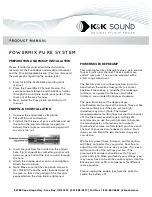
Concepts and Features
R&S
®
ZNC
13
User Manual 1173.9557.02 ─ 13
3.1.3.1
Trace Settings
The trace settings specify the mathematical operations used in order to obtain traces from
the measured or stored data. They can be divided into several main groups:
●
Selection of the measured quantity (S-parameters, wave quantities, ratios, impedan-
ces,...)
●
Conversion into the appropriate display format and selection of the diagram type
●
Scaling of the diagram and selection of the traces associated to the same channel
●
Readout and search of particular values on the trace by means of markers
●
Limit check
The "Trace" menu provides all trace settings. They complement the definitions of the
"Channel" menu. Each trace is assigned to a channel. The channel settings apply to all
traces of the channel.
If a trace is selected in order to apply the trace settings, it becomes the active trace. In
manual control there is always exactly one active trace, irrespective of the number of
channels and traces defined. The active channel contains the active trace. In remote
control, each channel contains an active trace.
See also
chapter 5.3, "Basic Remote Control Concepts"
3.1.3.2
Channel Settings
A channel contains hardware-related settings which specify how the network analyzer
collects data. The channel settings can be divided into three main groups:
●
Control of the measurement process ("Sweep", "Trigger", "Average")
●
Description of the test setup ("Power" of the internal source, IF filter "Bandwidth" and
"Step Attenuators", "Port Configuration")
Basic Concepts
















































